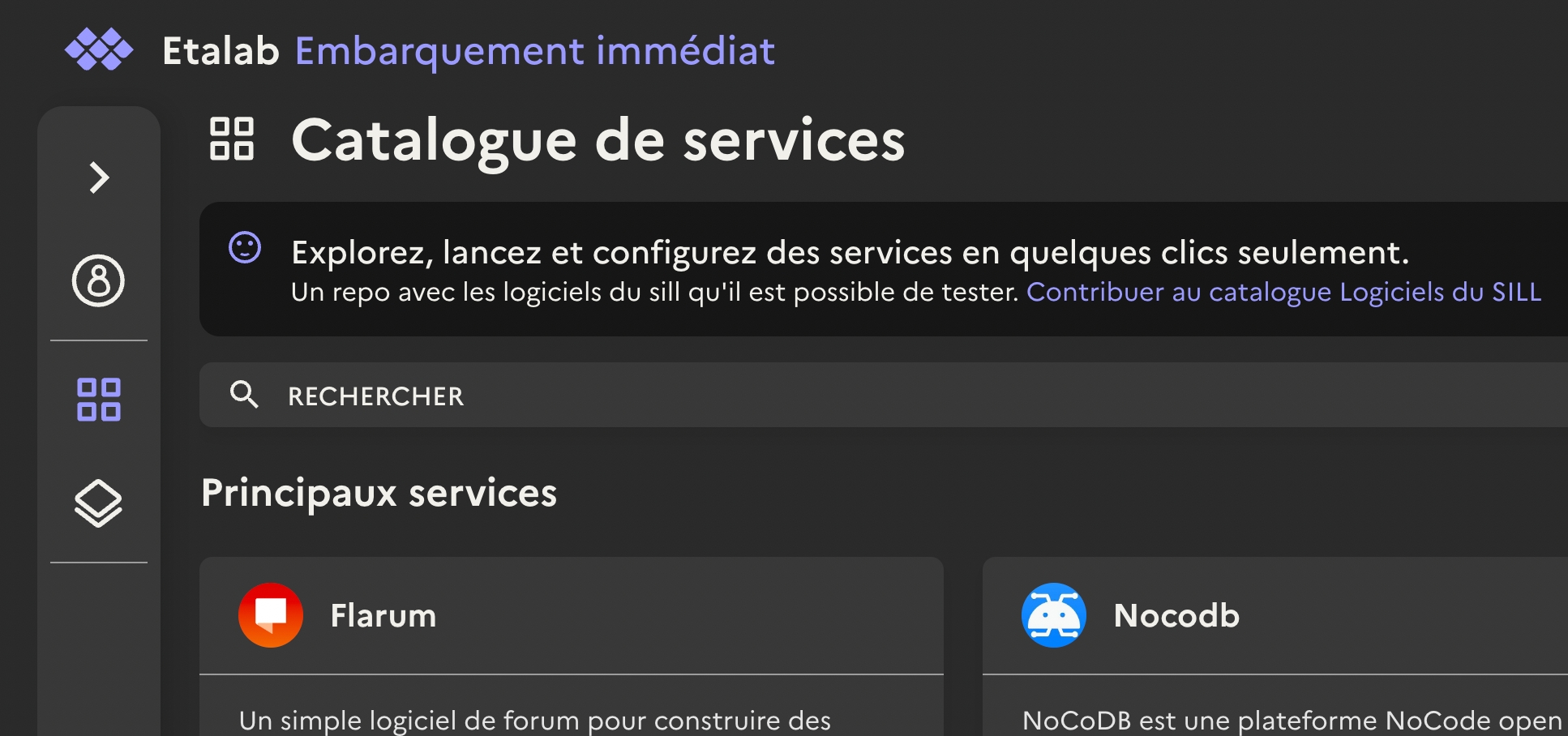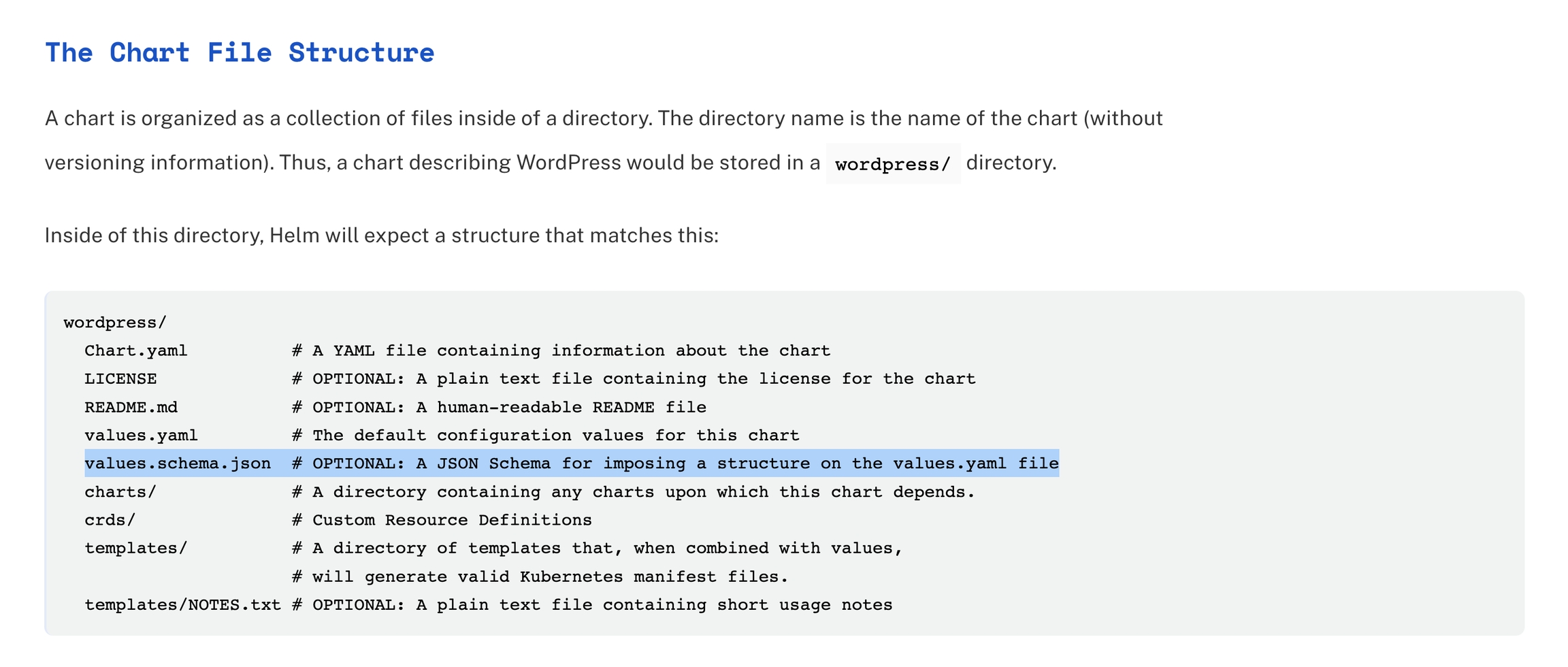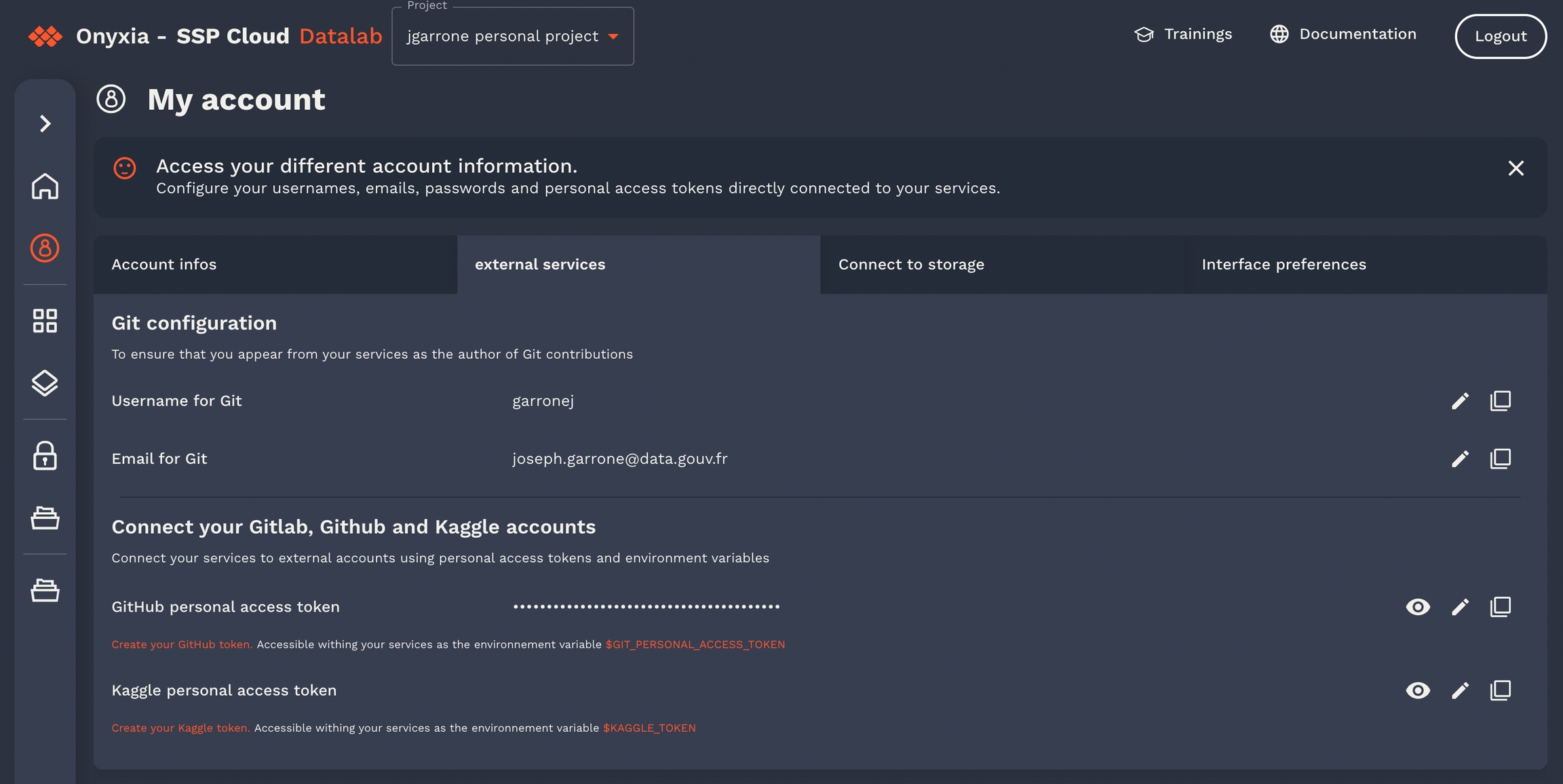🔬Catalog of services
Unserstand how Onyxia catalogs works and potentially create your own!
Every Onyxia instance may or may not have it's own catalog. There is three default catalogs :
This collection of charts help users to launch many IDE with various binary stacks (python , R) with or without GPU support. Docker images are built here and help us to give a homogeneous stack.
This collection of charts help users to launch many databases system. Most of them are based on bitnami/charts.
This collection of charts help users to start automation tools for their datascience activity.
You can always find the source of the catalog by clicking on the "contribute to the... " link.\
If you take this other instance, it has only one catalog, helm-charts-sill.

Using your own catalogs (helm charts repositories)
If you do not specify catalogs in your onyxia/values.yaml theses are the one that are used by default: See file.
To configure your onyxia instance to use your own custom helm repository as onyxia catalogs you need to use the onyxia configuration onyxia.api.catalogs.
Let's say we're NASA and we want to have an "Areospace services" catalog on our onyxia instance. Our onyxia configuctation would look a bit like this:
Customizing your helm charts for Onyxia
In Onyxia we use the values.schema.json file to know what options should be displayed to the user at the service configuration step and what default value Onyxia should inject.

[x-onyxia] overwriteDefaultWith
Let's consider a sample of the values.schema.json of the InseeFrLab/helm-charts-datascience's Jupyter chart:
And it translates into this:
Note the "git.name", "git.email" and "git.token", this enables onyxia-web to pre fill the fields.
If the user took the time to fill its profile information, onyxia-web know what is the Git username, email and personal access token of the user.

Here is defined the structure of the context that you can use in the overwriteDefaultWith field:
You can also concatenate string values using by wrapping the XOnyxia targeted values in {{}}.
[x-onyxia] overwriteListEnumWith
This is an option for customizing the options of the forms fields rendered as select.

In your values shema such a field would be defined like:
But what if you want to dynamicaly generate the option? For this you can use the overwriteListEnumWith x-onyxia option. For example if you need to let the user select one of the groups he belongs to you can write:
Defining region scoped resources limit
You probably want to be able to define a limit to the amount of resources a user can request when launching a service.
It's possible to do it at the catalog level but it's best to enable the person who is deploying Onyxia to define boundaries for his deployment regions.
This is the purpose of the x-onyxia param useRegionSliderConfig
You now have all the relevent information to submit PR on the existing catalogs or even to create your own.
Remember that a helm chart repository is nothing more than a GitHub repo with a special github Action setup to publish the charts on GitHub Pages.
If you are looking for a repo to start from have a look at this one, it has a directory where you can put the icons of your services.
Last updated
